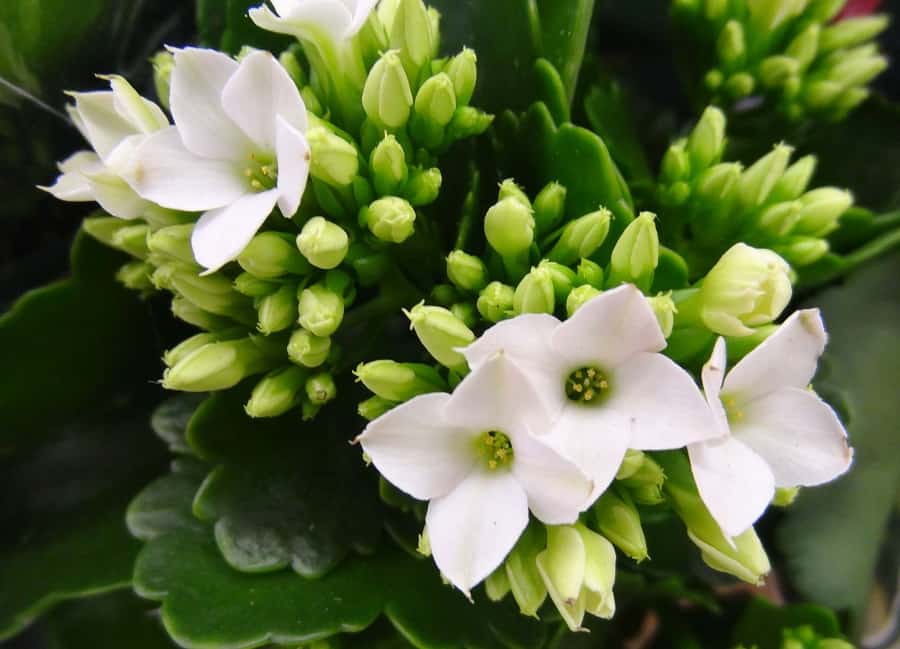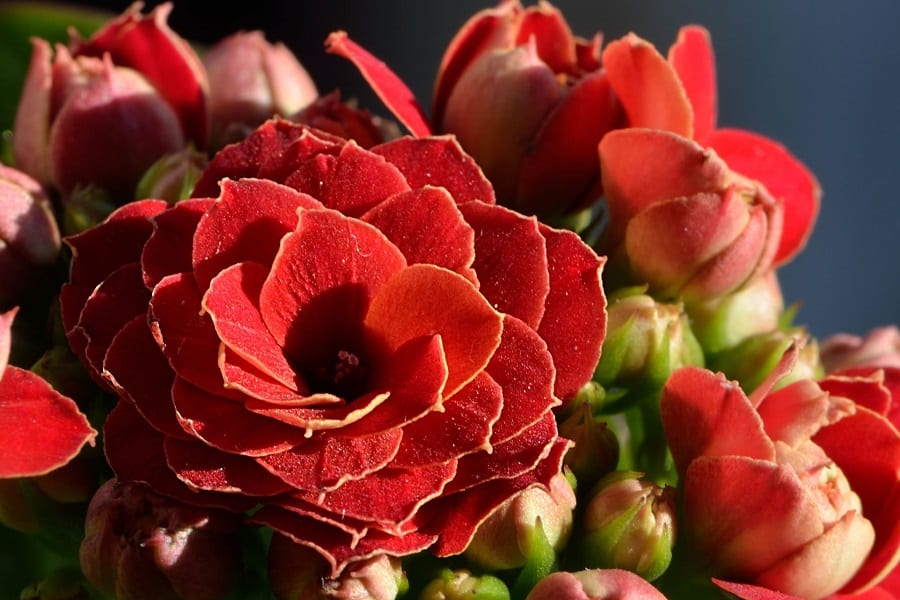The Curious Case of Kalanchoe and Calandiva: What’s the Difference?
If you’re a self-proclaimed plant parent, you’ve probably stumbled upon the Kalanchoe and Calandiva succulents. At first glance, they seem like botanical besties, sharing those signature fleshy leaves and vibrant blooms. But look a little closer, and you’ll find these two have some intriguing differences up their leafy sleeves. Buckle up, folks, because we’re about to dive into the curious case of Kalanchoe and Calandiva!

Contents
Kalanchoe vs Calandiva
A Tale of Two Origins
Our first clue lies in their origins. The Kalanchoe (Kalanchoe blossfeldiana) is the OG succulent, discovered in the wild jungles of Madagascar way back in 1926. It was a plant world celebrity when it arrived in Europe in the 1930s, rocking those fiery red flowers like a true diva.
On the other hand, the Calandiva is a more recent discovery, a delightful mutation found in 1998 by the plant breeders at Fides Goldstock in the Netherlands. Think of it as the Kalanchoe’s trendy, genetically-modified younger sibling.
Related Post:
40+ Kalanchoe Lower Classifications [With Pictures]
Bloomin’ Beautiful
While their leaves might be lookalikes, the real showstoppers are the blooms. Kalanchoe’s flowers come in a vibrant rainbow of hues like yellow, pink, red, magenta, and white, each petal a bold statement. In contrast, Calandiva’s flowers are dainty little rose-like clusters with a whopping 32 petals each, available in shades of white, red, pink, purple, and orange.


Size Matters (But Not Too Much)
When it comes to height, these two succulent superstars are in the same ballpark. Both can grow anywhere from 6 inches to 4 feet tall, with a similar width. They’re like plant twins who shop at the same clothing store but have slightly different styles.

Climate Comrades
Despite their differences, Kalanchoe and Calandiva share a love for warm, frost-free climates. If you live in a cooler region, keep them in containers so you can bring them indoors for the winter. Once inside, aim for temperatures between 60°F and 75°F (16°C to 24°C) to keep them happy and thriving.
Related Post:
Kalanchoe vs Sedum
Care and Keeping
Now, let’s talk care because every plant parent knows that’s half the battle. While their basic needs are similar, there are a few key differences to keep in mind.
Kalanchoe Kapers:
- Watering: These thirsty plants need a regular watering schedule, but don’t overdo it! Let the top 2 inches of soil dry out before giving them a drink.
- Fertilizer: During the growing season, feed them a blooming houseplant fertilizer high in phosphorus, diluted to half-strength.

Calandiva Caretaking:
- Light: These beauties love indirect light, so keep them out of direct sun, except during their winter blooming period.
- Watering: Underwatering is better than overwatering for these succulents. Check the soil every 1-2 weeks and water when completely dry.
- Fertilizer: Once they reach 12-18 inches tall, give them a little summer and spring fertilizer to keep them going.

So, there you have it, folks! While Kalanchoe and Calandiva may seem like twins at first, they’ve got their own unique personalities and quirks. But hey, that’s what makes them so darn interesting, right? Now go forth and show off your newfound succulent knowledge to all your plant-loving pals!
